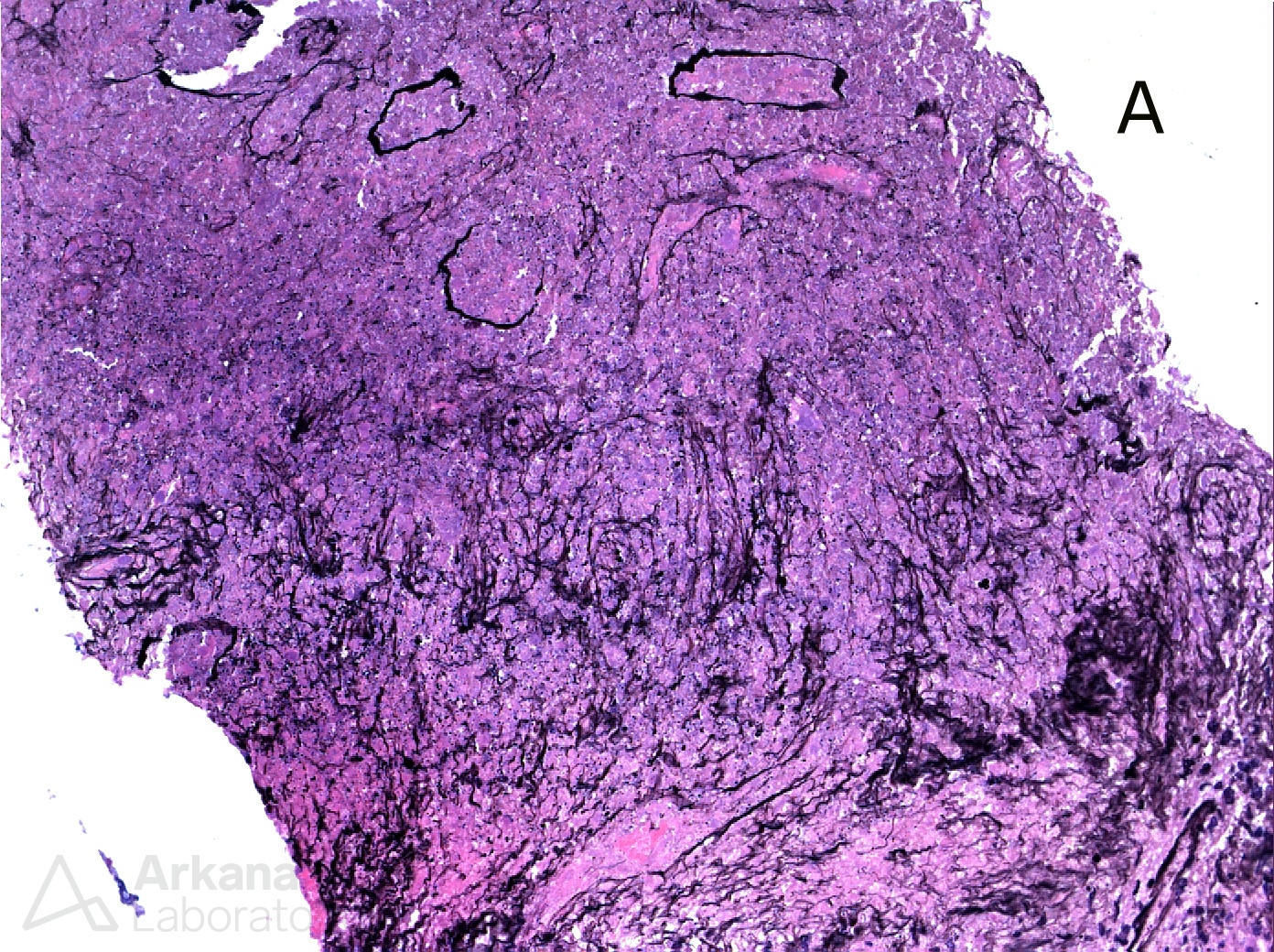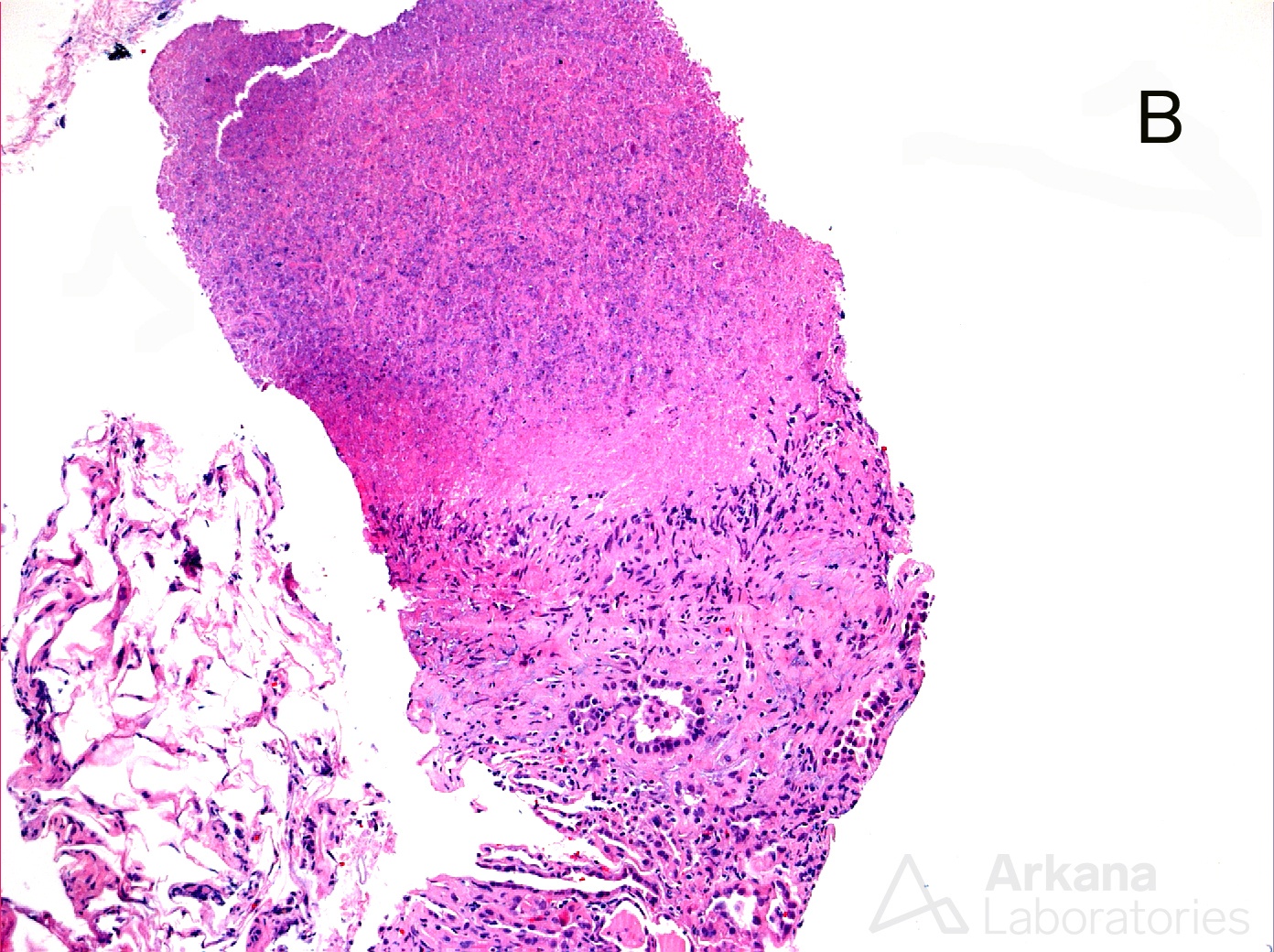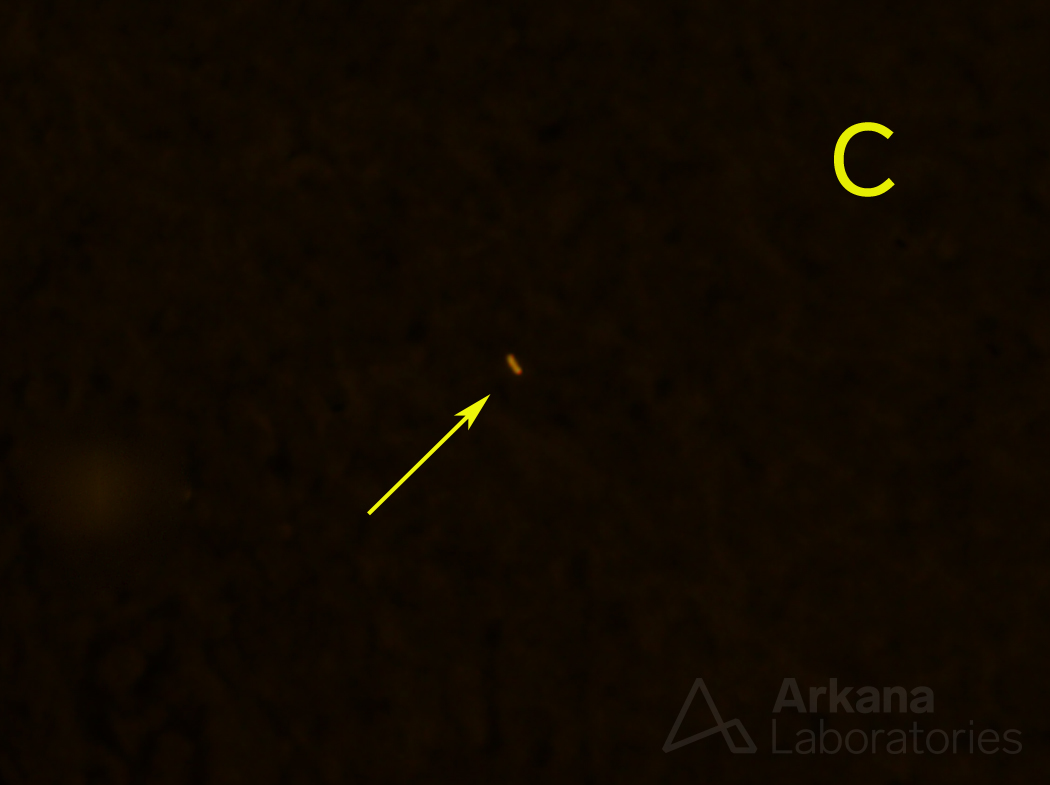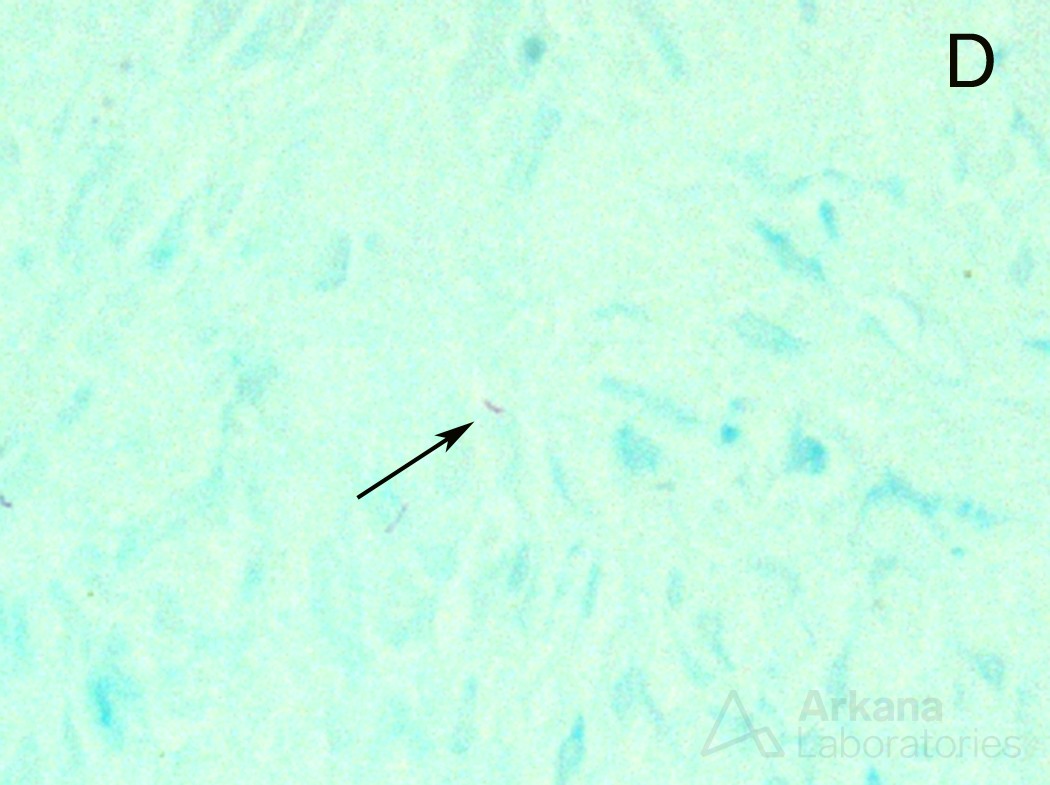A 69-year-old Caucasian man presented with general malaise and multiple febrile episodes that started several weeks prior to presentation. He was found to have a serum Cr of 3.6 mg/dl. Urinalysis showed 20 to 30 red blood cells/high-power field and occasional white blood cells. Urine showed a protein: Cr ratio of 2. A biopsy was performed to evaluate the etiology of the renal failure. Photomicrographs A and B show caseating necrosis in the renal parenchyma. Rare acid-fast bacilli were identified on the auramine-rhodamine (C) and acid-fast (D) stains. Follow-up laboratories confirmed the presence of a mycobacterium tuberculosis infection. Tuberculosis may involve the kidney as a localized process or a component of the disseminated disease. The presence of microorganisms on biopsy can be evaluated by using the Ziehl–Neelsen stain, also known as the acid-fast stain. The auramine-rhodamine stain is also used to visualize acid-fast bacilli by fluorescence microscopy. In this stain, the organisms fluoresce reddish-yellow. Although auramine-rhodamine has a lower specificity for acid-fast organisms compared with the Ziehl-Neelsen stain, it is far more sensitive and is, therefore, is often utilized as a screening tool in laboratories with fluorescence microscopy available.
Quick note: This post is to be used for informational purposes only and does not constitute medical or health advice. Each person should consult their own doctor with respect to matters referenced. Arkana Laboratories assumes no liability for actions taken in reliance upon the information contained herein.





